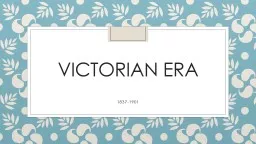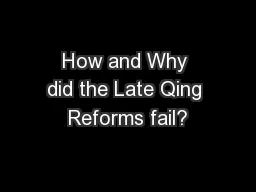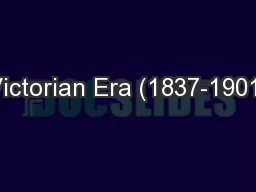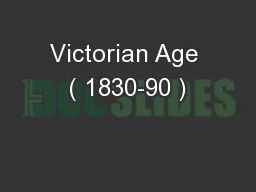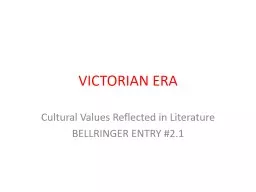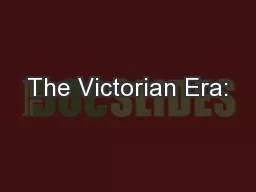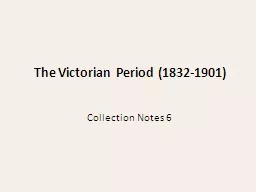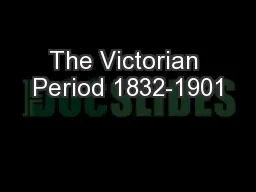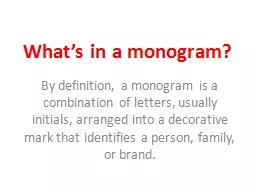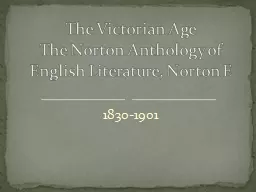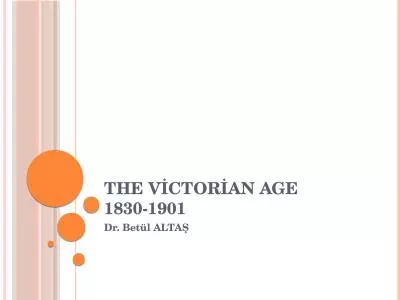PPT-Victorian era 1837-1901 Victorian Era
Author : nephewhers | Published Date : 2020-06-22
period of Queen Victorias reign June 1837 until her death January 1901 It was a long period of peace prosperity refined sensibilities and national selfconfidence
Presentation Embed Code
Download Presentation
Download Presentation The PPT/PDF document "Victorian era 1837-1901 Victorian Era" is the property of its rightful owner. Permission is granted to download and print the materials on this website for personal, non-commercial use only, and to display it on your personal computer provided you do not modify the materials and that you retain all copyright notices contained in the materials. By downloading content from our website, you accept the terms of this agreement.
Victorian era 1837-1901 Victorian Era: Transcript
Download Rules Of Document
"Victorian era 1837-1901 Victorian Era"The content belongs to its owner. You may download and print it for personal use, without modification, and keep all copyright notices. By downloading, you agree to these terms.
Related Documents

